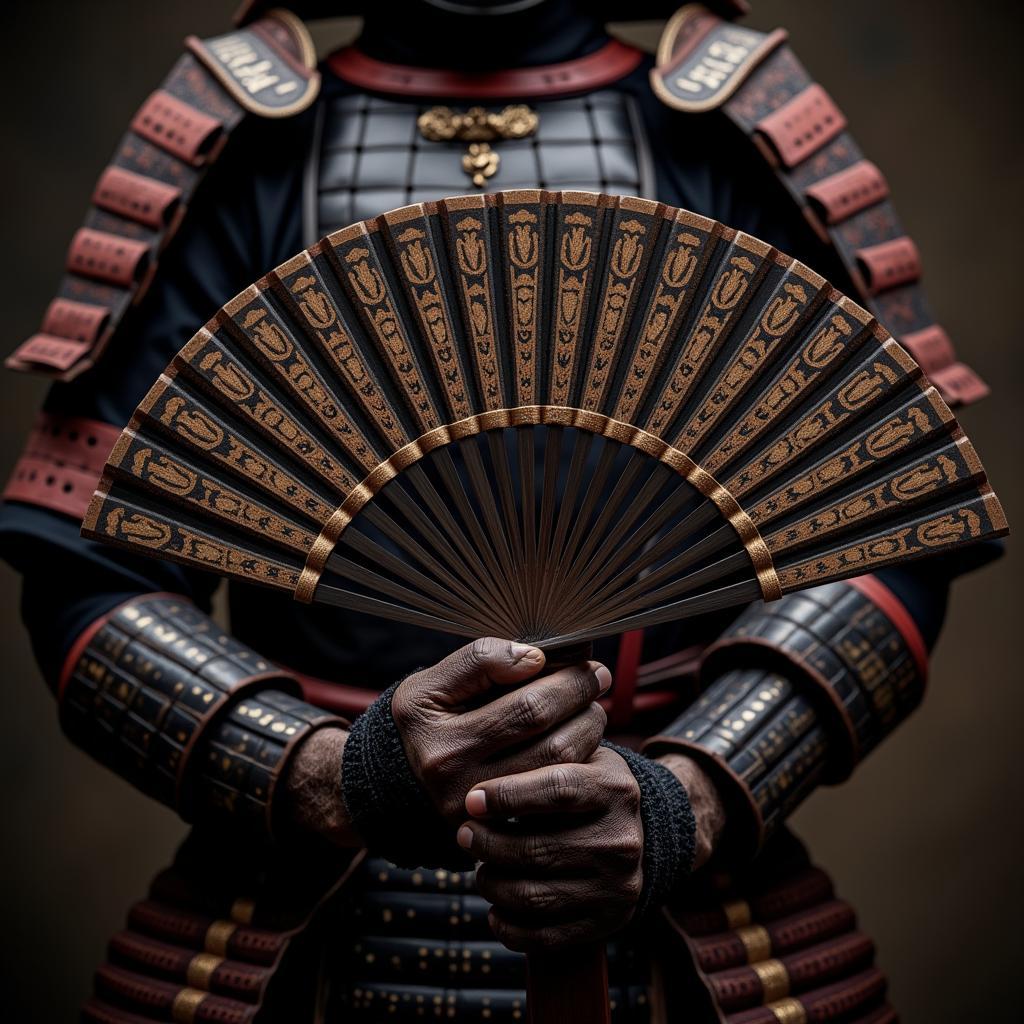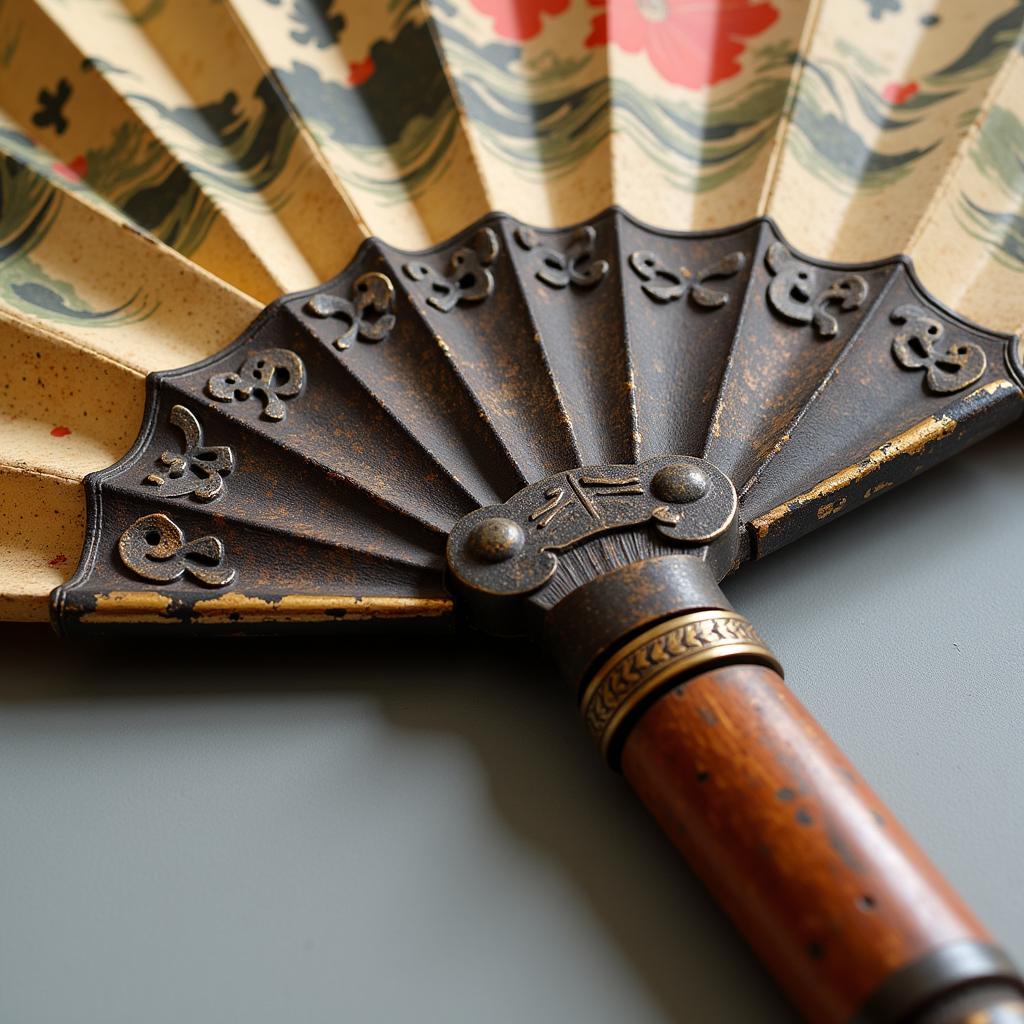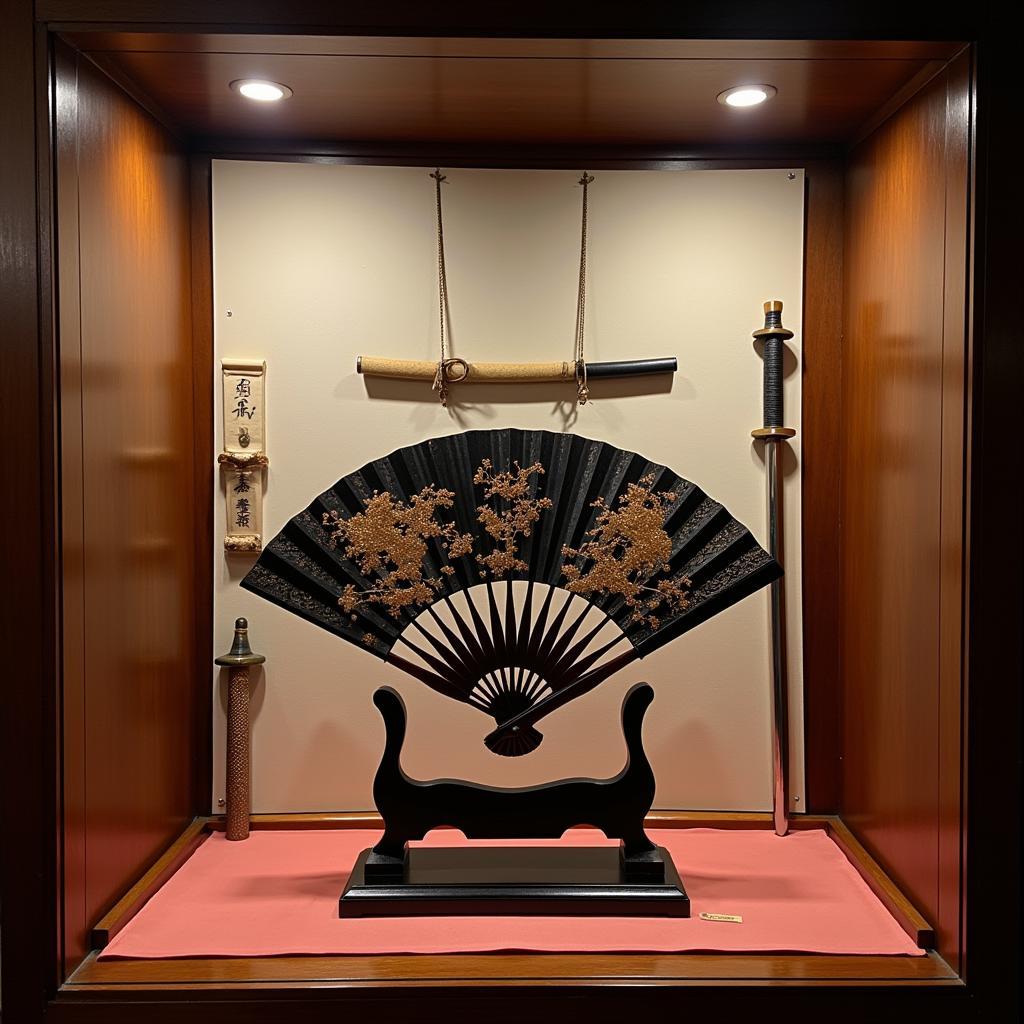Japanese War Fan for Sale: A Guide to Owning a Piece of History
October 10, 2024Japanese war fans, or gunsen, are more than just decorative objects. They’re tangible pieces of history, whispering tales of samurai valor and ancient battlefields. Today, these exquisite pieces are highly sought after by collectors and enthusiasts who appreciate their beauty, craftsmanship, and cultural significance. If you’re considering adding a Japanese war fan to your collection, this guide will provide you with valuable insights to make an informed decision.
Understanding the Allure of Japanese War Fans
 Samurai holding a Japanese war fan
Samurai holding a Japanese war fan
For centuries, Japanese war fans were an integral part of samurai culture. They served a dual purpose: as practical tools on the battlefield and as symbolic objects reflecting the samurai’s status and lineage. Crafted with meticulous care, these fans were made from durable materials like iron and wood, designed to deflect arrows, signal troops, and even serve as weapons in close combat.
Types of Japanese War Fans for Sale
When exploring the world of Japanese war fans, you’ll encounter a fascinating variety, each with its unique characteristics and historical context:
- Tessen: The iconic iron war fan, often associated with ninja and used for both defense and offense.
- Gunbai: A large, non-folding fan used by commanders to direct troops and convey signals on the battlefield.
- Maibai: A folding fan primarily used for ceremonial purposes and as a status symbol among high-ranking samurai.
Factors to Consider When Buying a Japanese War Fan
 Antique Japanese war fan details
Antique Japanese war fan details
- Authenticity: Ensure the fan is genuine by examining its materials, craftsmanship, and any accompanying documentation. Replicas and reproductions abound, so careful research is crucial.
- Condition: Inspect the fan for any signs of damage, such as cracks, chips, or repairs. The overall condition greatly influences its value and historical significance.
- Materials: Traditional Japanese war fans were crafted from high-quality materials like iron, wood, paper, and silk. Understand the materials used in the fan’s construction to assess its authenticity and craftsmanship.
- Historical Period: Fans from different periods exhibit distinct styles and materials. Determining the fan’s age and historical context enhances its value and provides a deeper understanding of its significance.
- Price: The price of Japanese war fans varies greatly depending on factors like authenticity, age, condition, and rarity. Research comparable pieces to gauge a fair market value.
Caring for Your Japanese War Fan
 Displaying a Japanese war fan
Displaying a Japanese war fan
Preserving the beauty and historical integrity of your Japanese war fan requires proper care:
- Handling: Handle the fan with clean hands and avoid touching the delicate paper or silk leaf.
- Storage: Store the fan in a cool, dry place away from direct sunlight, humidity, and extreme temperatures. A display case with UV protection is ideal for showcasing and protecting your investment.
- Cleaning: Consult a professional conservator for cleaning and restoration to avoid causing any damage to the delicate materials.
Conclusion
Owning a Japanese war fan is like holding a piece of history in your hands. It’s a testament to the artistry, skill, and warrior spirit of a bygone era. By understanding the nuances of these fascinating objects, you can make an informed purchase and become the proud custodian of a piece of Japanese heritage.
Remember, when searching for “Japanese War Fan For Sale,” prioritize reputable dealers and auction houses specializing in Asian antiques to ensure authenticity and quality.